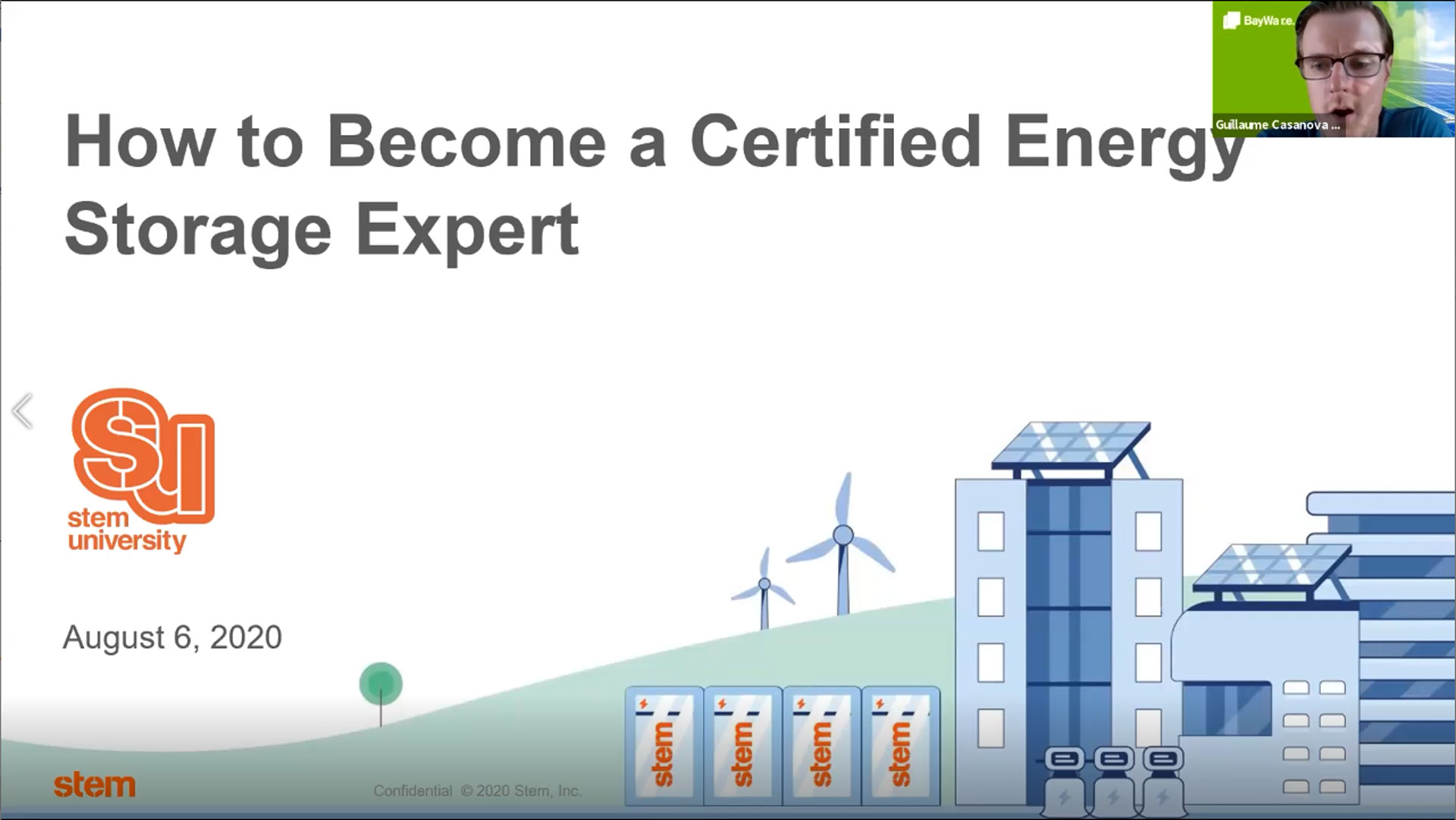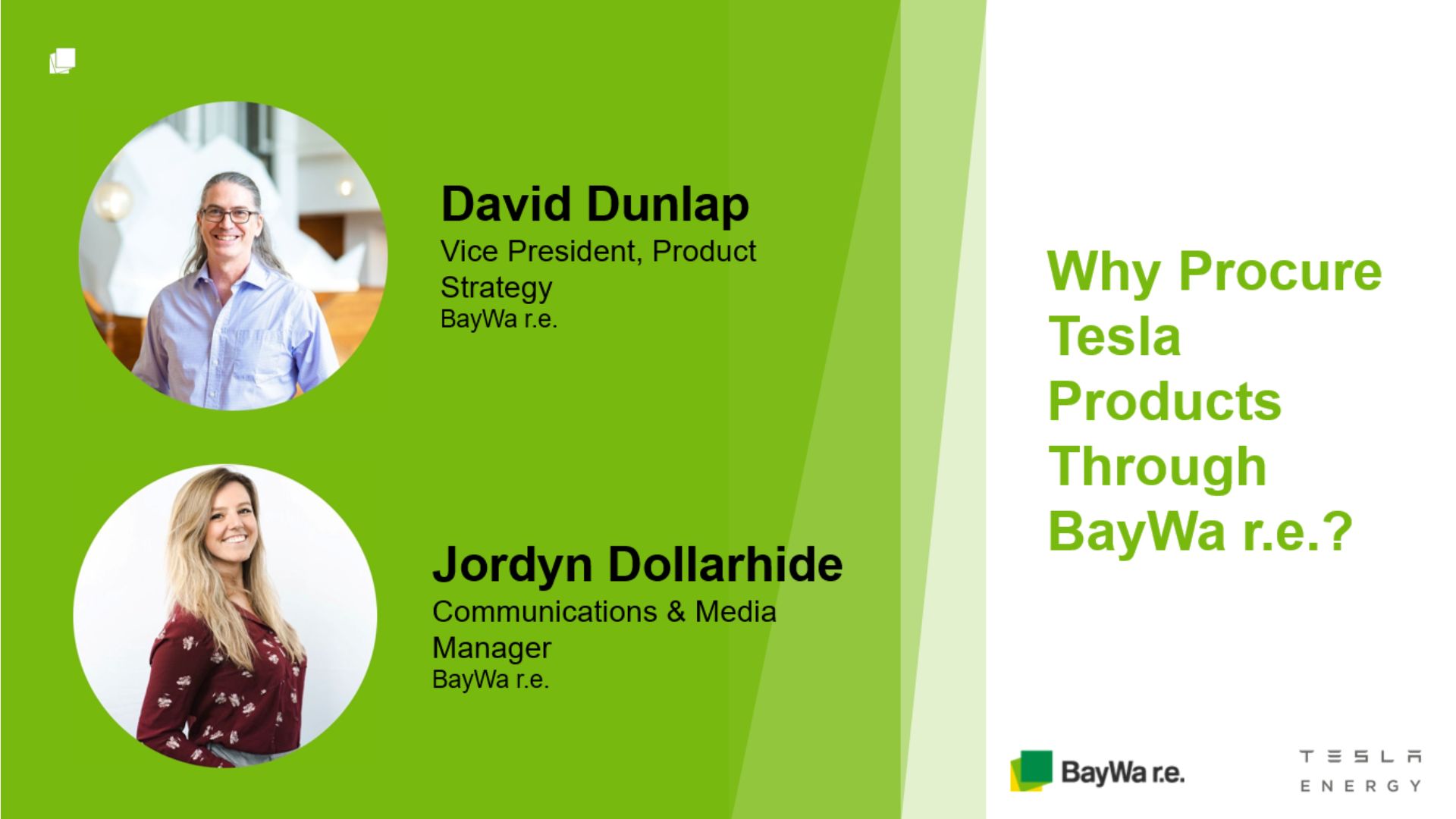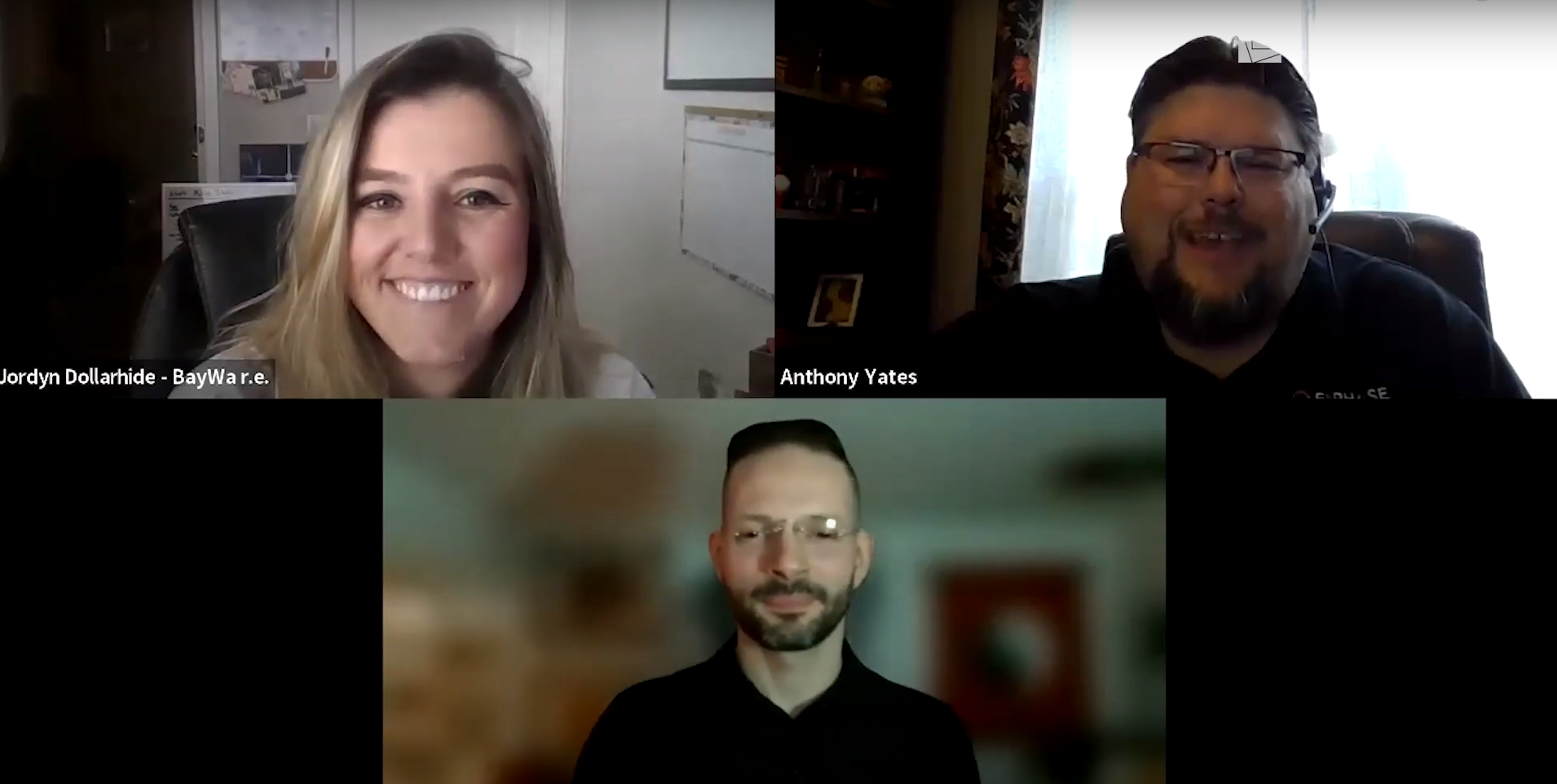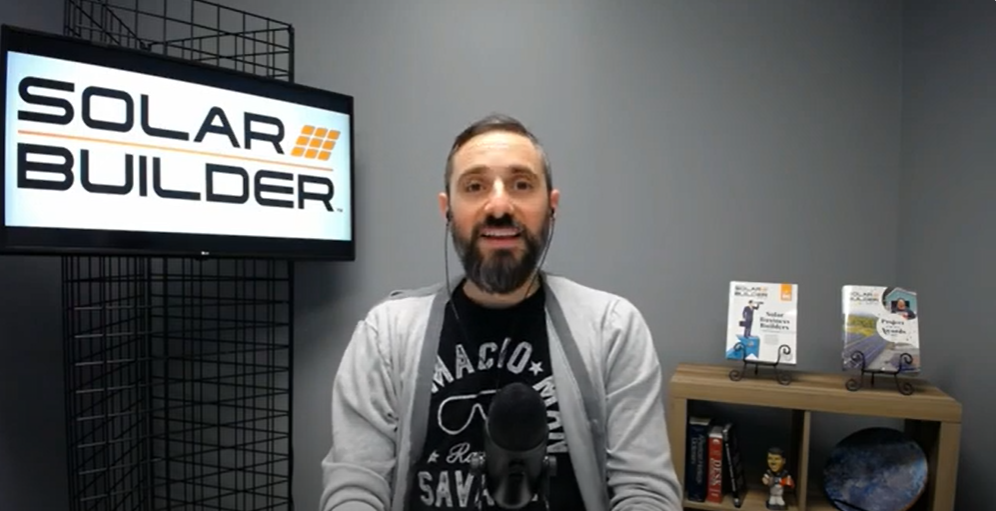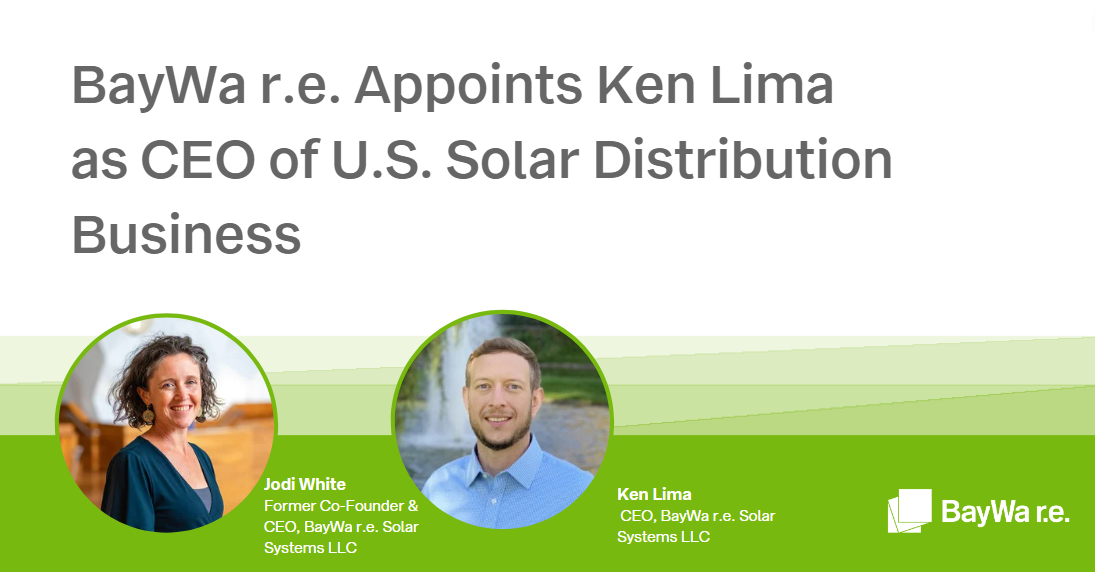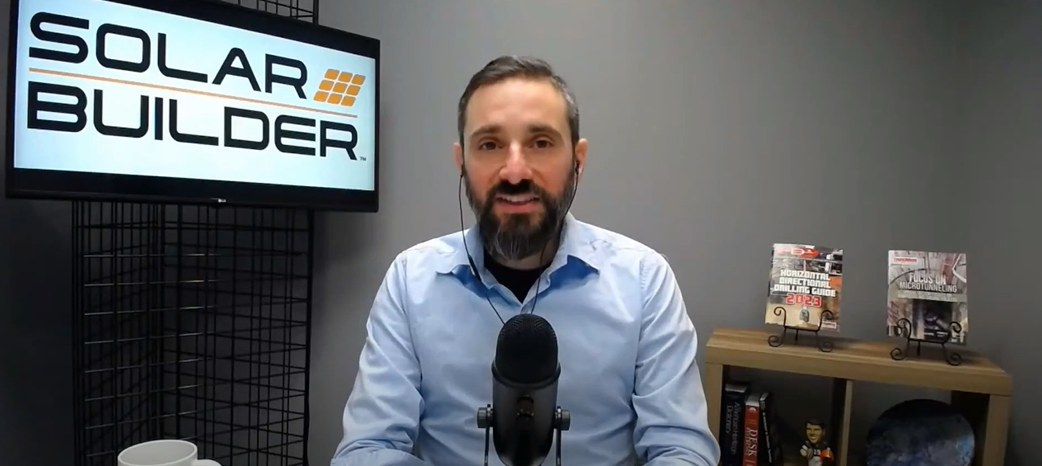From market demand to supply chain changes to pandemic and wildfire impacts, 2020 has been a journey for contractors with commercial and industrial (C&I) projects. There’s quite a bit to stay apprised of, as everyone manages inventory for the year-end rush and start planning ahead for sales and opportunities in 2021. Fortunately, we covered some key takeaways in this week’s week’s #SolarTownHall — a special commercial solar edition!
Scroll down to watch, listen, and share the video and podcast with your colleagues.
Every month, CEO Boaz Soifer, solar contractors, and industry leaders come together to discuss the best way to approach the challenges ahead.
Looking for best-in-class products, service, and a partner you can count on?
Michelle Davis, a Senior Analyst at Wood Mackenzie Power & Renewables, led off our expert roundtable with an excellent overview of the U.S. commercial solar market. “You’ll notice that some of the smaller installers — those that were doing 10 MW or less — proved to be slightly more resilient than the larger installers,” said Davis regarding 2018-2019 trends. “In my view, this kind of highlights the sweet spot that a lot of commercial solar installers occupy.”
And while larger installers (10 MW or more) deployed about half of all capacity in 2019, the good news is that the C&I market remains wide open. According to work by Davis and colleagues, 70% of commercial buildings in the United States are untapped — equating to more than 600,000 buildings and about 145 gigawatts of onsite solar potential. Indeed, our contractor guests on this week’s show reported no slowdown during 2020.
“We do a lot of commercial rooftop projects. We haven’t seen a real slow down at all in our business — it’s been busier,” said Aron Hauser, Director of Commercial Solar at Preman Roofing-Solar in San Diego, California. Further up north, Cale Garamendi, Commercial Project Developer at Sandbar Solar & Electric reported that after a brief pause in March-April-May, business picked back up again, especially in the public works and nonprofit sectors. “I agree that I see a huge potential for growth in small and medium-sized C&I projects,” said Garamendi. “I think a lot of entities are trying to find ways to increase their operating budget through third-party ownership models, so we’re finding some traction there. A lot of private businesses are tightening their belt on the small commercial, less than 500 kW scale. So we’re seeing a little downtick in that department.”
Regionally and timing-wise, the pace is quickening. “We haven’t seen demand slow down. It’s probably shifted by segment: we are now focusing more on essential retail, like medical device manufacturing, food manufacturing, and logistics,” said Alan Russo, Chief Revenue Officer at Stem, Inc. “And then the MUSH sector (Municipalities, Universities and colleges, K-12 Schools, Hospitals) also is showing a lot of demand still here in California.” Ben Frank, Director of C&I National Sales at SolarEdge, agreed. “You know, the year-end for commercial is always a crazy time where people are trying to get things completed,” said Frank. “It’s twice or three times as crazy now because of people catching up from COVID, as well as the ITC that’s continuing sunset. So all that put together, everybody hang on — because Q4 is going to be a very, very crazy I think for everyone here.”
The conversation also covered hurdles to clear, as well as selling points for commercial solar for the end-customer. Permitting was mentioned as a main cause of delay during the initial months of the pandemic when inspections and approvals were delayed. [Editor’s Note: Read our recent articles on the SolarAPP virtual permitting portal and watch our April 8 town hall on virtual site assessments and our August 26 town hall on inspections.] As for benefits, recouping costs and building resiliency were cited.
“You know, adding storage significantly increases the realized gross margin dollars from a project,” said Alan Russo. “So it improves the project cash flows, improves the project realized gross margins, and adds more value to the customer and the risks of the project.”
Of course, the lifeline of resiliency can trump even the tightest of financial feasibility reports, and recent wildfires, storms, and other natural disasters underscore this point.
“Everyone knows the spot—they lost hundreds of thousands of dollars of product in recent rolling blackouts,” said Cale Garamendi.
Michelle Davis, Senior Analyst on U.S. Distributed Solar at Wood Mackenzie Power & Renewables, gives our audience an overview of recent C&I market trends in the United States.
He was speaking of a well-known local grocery store in his region. “And this decision whether or not to adopt resiliency as part of an energy storage project is something where you don’t just simply look at your savings… there’s this whole intangible, hard to pin down dollar amount that can be saved, and not to mention the revenue by staying open or partially open as a business. It’s a little harder to just drop that into a spreadsheet or into a cashflow table. But a conversation with a customer around these topics can really be meaningful.”
And though storms and COVID may intersect with C&I sales and opportunities, Michelle Davis reminded us of one other force of nature: state regulations. “Commercial solar is really very highly dependent on state policy in order to create markets. So the five states that are listed here — California, New York, Massachusetts, New Jersey, Maine — those five states are going to make up half of the total outlook over the next five years for commercial solar,” said Davis.
“And this is really being driven by the fact that these States have incentive programs or policies in place that drive commercial solar and create really good market opportunities,” continued Davis. “And that importance of state policy will continue to be the case over the next several years.”
Alan Russo, Chief Revenue Officer at Stem, Inc., discusses the notion of “resiliency” when discussing the value of project investments with prospective commercial solar and storage customers.
As 2020 wraps and 2021 beckons, the C&I market offers exciting rewards for contractors already in the game or ready to dive in. BayWa r.e. Solar Systems will also be increasing our business intelligence offerings on C&I developments, so sign up for our market briefs and as always, stay in touch with your sales representative to learn about new financing programs and partnerships.
- Michelle Davis, Senior Analyst, US Distributed Solar at Wood Mackenzie Power & Renewables
- Alan Russo, Chief Revenue Officer (CRO) at Stem, Inc.
- Aron Hauser, Director, Commercial Solar at Preman Roofing-Solar
- Cale Garamendi, Commercial Project Developer at Sandbar Solar & Electric
- Ben Frank, Director of National Sales – Commercial and Industrial, SolarEdge
Thank you all again for participating in our Solar Town Hall events and being part of our solar community!
Missed one of our events? Access all of our expert roundtables in our Solar Town Hall archives, find video excerpts on YouTube, and take podcast versions with you on the go via Spotify, Apple, or Google.
BayWa r.e. Solar Systems LLC supplies residential and commercial solar installers in the United States with quality solar + storage components, forecasting, business planning advice, and a community of experts. Visit www.solar-distribution.com to read our industry insights articles and stream our Solar Tech Talk and Solar Town Hall podcasts on YouTube and Spotify. Follow us on LinkedIn, Twitter, and Facebook to stay connected. Ask us about our Split Pay financing program and use our industry-leading Webstore to save time, get gear shipped, and get jobs done! Part of the BayWa r.e. Global family of renewable energy companies.
